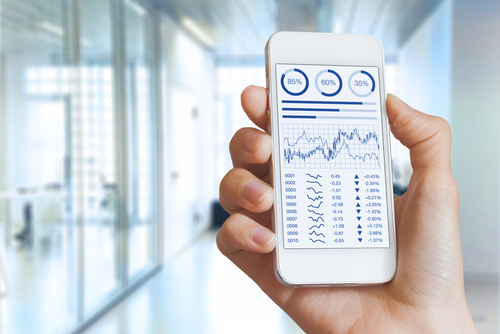In the last ten years, business intelligence has undergone a radical transformation – there was an exponential increase in data, cloud access became the norm, and spreadsheets gave way to interactive dashboards. They provided visualization of data and made it actionable and insightful, and more valuable to businesses. With the arrival of self-service analytics, the data product chain went beyond the ambit of bespectacled, serious looking analysts, and into the hands of rookies.
How is BI and Analytics Expected to Change?
As far as data is concerned, 2018 was especially big – and we’re likely to see the trends of the last year continuing in 2019 as well. However, just like the business environment, the BI landscape is also evolving; we can expect BI strategies to become more personalized. Whether they are startups or multinational corporations, businesses today are no longer asking whether they need more access of BI and analytics, but instead, are asking about the best and most suitable BI solutions for them; they are asking for the best method of presenting every data story rather than whether data visualizations are required.
Experts predict that 2019 will see increased emphasis on data discovery and data quality management; secure and clean data presented in a powerful, yet easy to understand manner; a year of AI and multiple cloud strategies; and advanced analytics capabilities that necessitate minimal human effort. According to the Business Application Research Center’s BI survey, the international market for BI solutions will witness huge technological changes like Cloud BI, BI on mobile, AI powered analytics, and tight security and data privacy regulations.
How is AI expected to affect BI platforms?
With machine learning and artificial intelligence continuing to revolutionize businesses, we can expect an increased dependence on the automated data analytics capabilities of robust BI solutions. With AI research almost having reached a kind of maturity, machine learning and deep learning apps have already started emerging in the market. We could well see Advanced Analytics coming into the mainstream in this year.
Be Prepared for these BI trends:
Chief Data Officer
Industry experts opine that 90% of big companies will employ an individual as the Chief Data Officer in 2019; this employee will play an important role in shaping the BI and analytics culture in the company.
Self-service
According to a study by Gartner, Self-service analytics and BI users combined will perform more analytics functions than data scientists in this year. Data democratization is achieved through self-service BI, and the benefits provided by analytics are made available to all employees.
Users will be able to directly access tools for creating reports on demand, and it is hoped that this will lower the burden on the in-house IT department.
New Data Governance Regulations
2017 saw an alarming increase in data attacks, causing widespread damage to businesses. This led to the implementation of stringent policies regarding data governance; the GDPR in Europe is an example. Vendors of BI solutions will focus on adherence to these regulations
Emphasis on Master Data and Data Quality
For any BI operation to be successful, it is essential that the quality of data is not compromised in any way. BI solution providers have focused on delivering improved capability of managing Data Quality and Master Data on their systems; now, customers will have the capability to check and manage data quality from a unified database that contains the master data, rather than navigate multiple databases that are not connected.
Predictive and Prescriptive Analytics Tools

Business analytics tries to provide resolutions to queries like what will happen, or how can we make it happen? With big data gaining importance in the web analytics process for big and small businesses, predictive and prescriptive analytics are going to be huge in the coming future.
Greater Cloud Adoption
Gartner predicts that starting from 2019, most business will shift the majority of their Advanced analytics and other data activities to the cloud. The process is already under way, and is expected to increase steadily. It will serve to bring down the expenses related to the maintenance and ownership of infrastructure in house.
Augmented BI
With the rise of self-service platforms for BI, we may also see augmented analytics tools making an appearance this year. With machine learning and artificial intelligence, these tools will render analytics intuitive, and user-friendly to business users who are not tech savvy, thereby delivering a new, improved UX. So even if data scientists are in short supply, it won’t matter so much.
Advanced Data Discovery Tools
Often, businesses have to depend heavily on data scientists even for routine understanding of business issues – and that can be bothersome. However, innovative BI systems with enhanced data discovery and visualization capabilities will drastically reduce this dependence. This trend had just begun to emerge towards the end of 2018, and is expected to penetrate multiple management layers this year.

